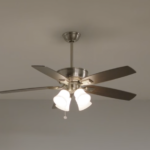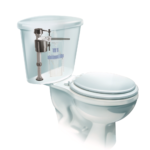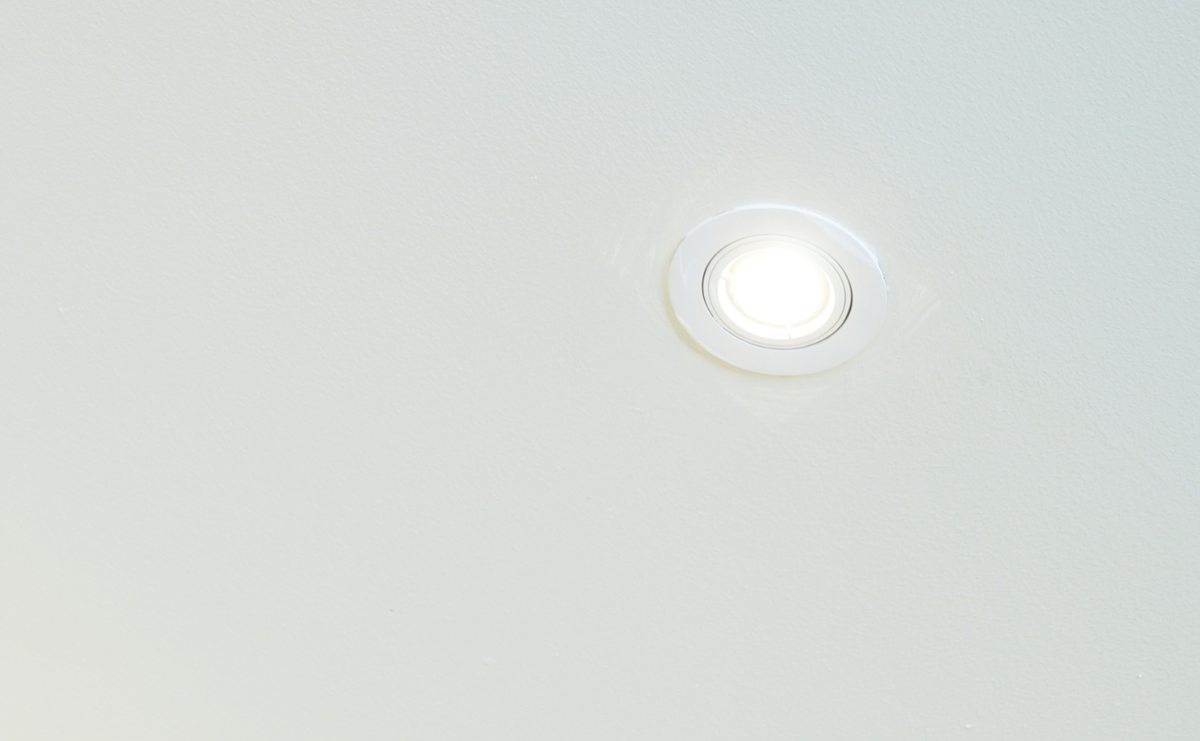
LED downlights have become a popular lighting choice for both residential and commercial spaces. They offer energy efficiency, longevity, and excellent illumination.
Whether you use it for spotlighting or decide to use downlights entirely, there is a spot for a downlight in every room of your house.
Whether it’s creating a warm relaxing lounge room, a sharp focused office, highlighting beautiful art pieces in your hallway or providing the perfect lighting for those bathroom mirror selfies.
The options for downlights are limitless. They are a fantastic way to provide mood and ambience in any room.
But there’s often confusion about how to change downlights in the most economical and effective way.
Below are some tips and tricks and a step-by-step method on how you can learn to change your downlights at home.
Remember – In Australia you need a licenced electrician to change a downlight. So, if you need some downlights installed, replaced or repaired, give us a call.
Do I need an electrician to change a downlight?
In Australia you need a licenced electrician to change a downlight.
Halogen bulb vs LED
Do you have the right bulb?
When it comes to your downlights, knowing what bulb you currently have fitted and what bulb is best for you is important. There are two different options, Halogen vs LED.
Below is a comparison between the two types of bulbs:
Energy Efficiency:
- LED: LED bulbs are highly energy-efficient, consuming significantly less energy than halogen bulbs to produce the same amount of light. They can typically save up to 80-90% on energy costs compared to halogen bulbs.
- Halogen: Halogen bulbs are less energy-efficient than LEDs and produce more heat, which means more energy is wasted.
Lifespan:
- LED: LED bulbs have a much longer lifespan compared to halogen bulbs. They can last up to 25 times longer, potentially lasting for tens of thousands of hours.
- Halogen: Halogen bulbs have a shorter lifespan compared to LEDs, typically lasting around 2,000 to 5,000 hours.
Heat Emission:
- LED: LED bulbs emit very little heat, making them safer to use and more suitable for applications where heat buildup is a concern
- Halogen: Halogen bulbs produce a significant amount of heat, which can be a concern, especially in confined spaces.
Brightness and Color Temperature:
- LED: LED bulbs are available in a wide range of brightness levels and colour temperatures, offering more flexibility in lighting design. They can produce warm, cool, or daylight-like hues.
- Halogen: Halogen bulbs typically produce a warm, yellowish-white light similar to traditional incandescent bulbs. They have limited options in terms of colour temperature.
Cost:
- LED: LED bulbs tend to have a higher upfront cost compared to halogen bulbs. However, their lower energy consumption and longer lifespan result in significant cost savings over time.
- Halogen: Halogen bulbs are generally less expensive upfront but can be more costly to operate and maintain due to their higher energy consumption and shorter lifespan.
Although Halogen bulbs might have a cheaper upfront cost, LED lights blow the halogen lights out of the water. They are far more efficient, versatile and environmentally friendly therefore they are the superior type of light bulb.
Step to change a downlight
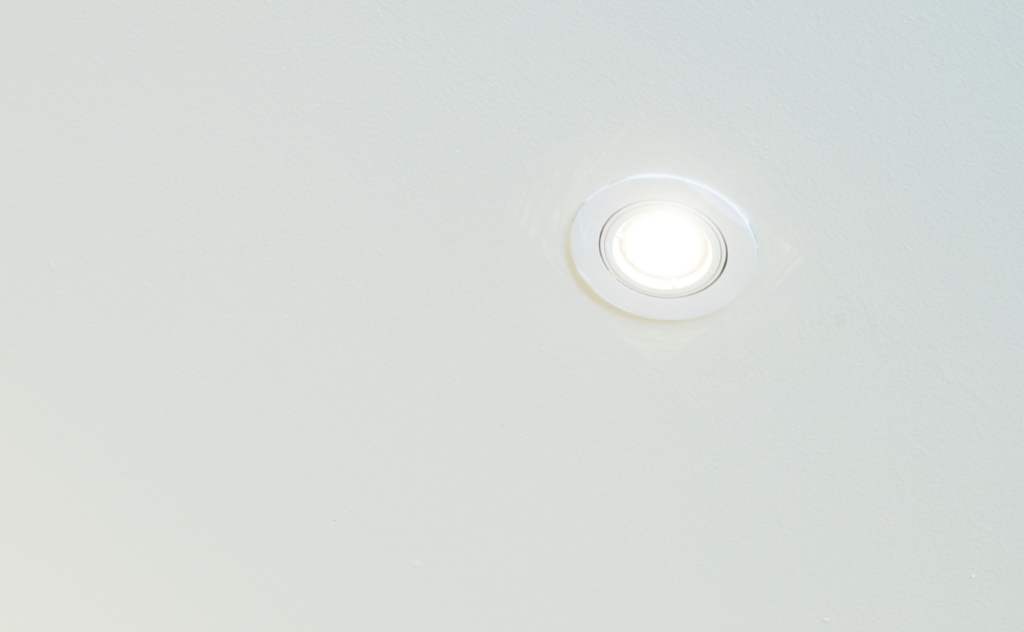
If you feel as though you can safely and correctly change the downlight globe yourself, here is a step-by-step guide to follow:
Step 1: Turn off power
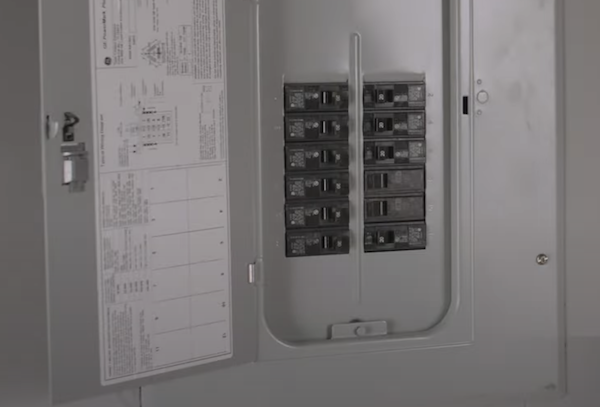
Before you start, it is important to turn off the power to the downlight you will be working on. You can do this by turning off the switch controlling the light or by turning off the circuit breaker that supplies power to the light.
You want to ensure that there is no electricity running through while you are changing the lights.
Step 2: Remove the cover
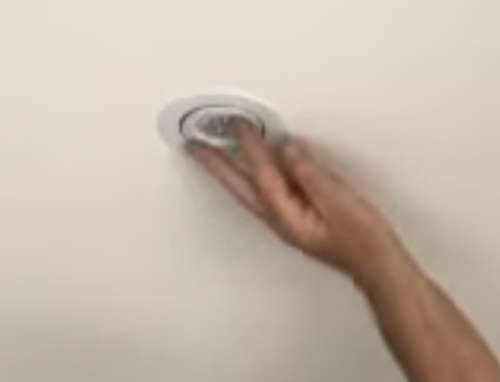
The next step is to remove the cover that is covering the downlight bulb. This can be done by gently rotating the downlight, or lightly getting your fingers beneath the edges and popping it out.
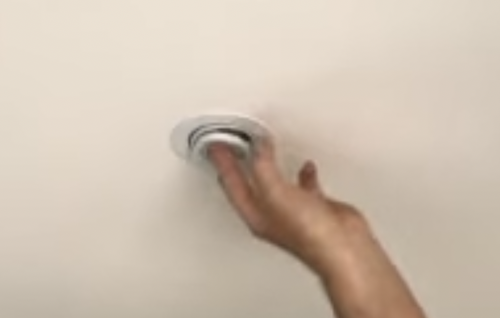
If the cover is held in place by screws, use a screwdriver to remove them. It is important to be very careful with this process as we don’t want you to have to do any patchwork for your roof.
Step 3: Remove the old light from the carriage
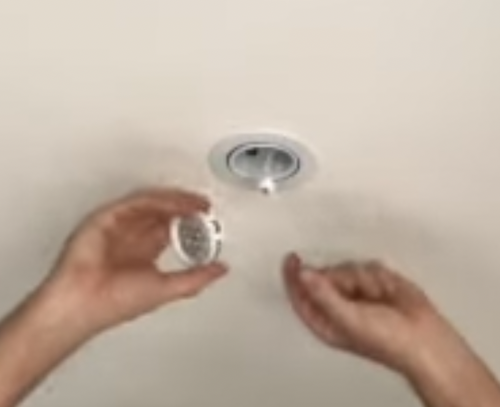
Once the cover is removed, Hold the top of the cable and wiggle it slightly to remove the old bulb. Be careful not to twist the bulb too hard, as it could break.
Take the old light out of the holder. If it is a 12-volt downlight there will be two pins at the back of the light. It Is important to identify the type of bulb so it can be replaced by the same type.
Step 4: Replace with a new bulb
With the old bulb removed, you can now replace it with a new one. Make sure the new bulb is the same type and has equivalent wattage, as the old one. To install the new bulb, gently push it into the socket of the carriage and click it into place.
Step 5: Test the new bulb
Before replacing the cover, plug it back into the cable where the two pins are, then turn the power back on and test the new bulb to make sure it is working correctly. If the bulb does not light up, turn the power back off and double-check that it is securely seated in the socket.
Step 6: Replace the cover
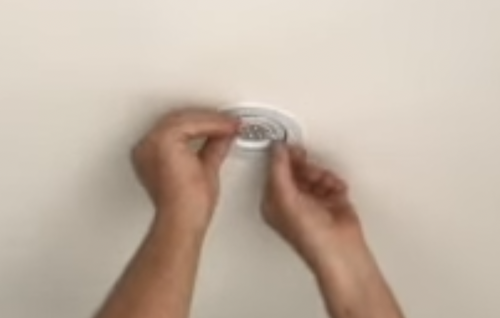
Once you have verified that the new bulb is working correctly, replace the cover turning it back into its slot in the roof. If the cover is held in place by screws, use a screwdriver to reattach them.
Step 7: Turn the power back on
Finally, turn the power back on by either turning the light switch back on or flipping the circuit breaker switch. Test the downlight again to ensure it is working correctly.
Replacing a downlight bulb can be a simple task that can be done by following these instructions in order. However, if you are not confident in your ability to do the job safely, it is recommended that you call an electrician to ensure the job is done correctly.
How many downlights do I need for my space?
It can be tricky when it comes to choosing how many downlights you will need in a room.
A general rule of thumb you can go by is around 1 downlight per 1-2 ms of coverage at an average roof height for an adequate cover of light.
The beam angle should be considered. A normal light will have a beam angle of 360 degrees. Downlights, on the other hand, will have a smaller beam angle due to being closer to the roof or recessed into the roof.
The usual beam angle of downlights is 45 degrees but the angle can also be wider, between 60-120 degrees creating a softer light. You could also opt for a smaller beam angle, around 25 degrees, which allows for a more concentrated light for better visibility.
Larger beam angles mean that the downlights can be more spread out over the roof, while a smaller beam light generally means they can be closer together.
There are many factors including the size of the room, What the room will be used for and the mood you are trying to obtain. If you are going for mood lighting in a bedroom or living room, it might be ideal to have fewer lights to create a calm atmosphere, therefore a wider beam angle can be used.
In a kitchen, you need to have clear visibility, so opting for more lights can be helpful and having a smaller beam angle can give you more direct light for higher visibility.
What colour downlights are best?

Proper lighting enhances both the functionality and aesthetics of a home, contributing to its overall comfort and livability.
Here are some tips when it comes to deciding the perfect colour of lights for the rooms of your home:
Warm downlights
Warm lights are yellow, similar to a candle or flame. Warm light is best used when you want to create a relaxed and comfortable feeling.
This is best for rooms like the lounge room and the bedrooms, or even the dining room. This helps you wind down at night and allows you to have a peaceful evening.
Cool downlights
Cool lights are blue and sharper in colour, similar to a screen on your devices. Cool light is great for when you need more visibility in a room, or where you need to concentrate.
This is best for when you are in the kitchen while chopping food, or in the bathroom to apply makeup and do your hair. It is also effective in studies and offices for when you need to stay zoned in on work.
Now sometimes it may require you to have both types of lighting in a room, That is why most modern downlights have the ability to change.
As simple as flicking a switch can have you going from being locked into your work, to feeling calm and relaxed with warm lighting.
The effect lighting has on a house can not be understated, allowing you to create comfortable and inviting spaces for relaxation, productivity, or socialisation.
Choosing the right lighting and knowing how to change the type of light or fix an old light can be extremely useful in maintaining the essence of each room.
Remember – In Australia you need a licenced electrician to change a downlight. So, if you need some downlights installed, replaced or repaired, give us a call.




